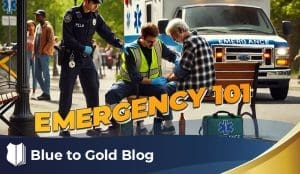Today, I’m going to teach you the four essential elements you need before conducting a warrantless vehicle search.
Element 1: Probable Cause
This might seem obvious, but you must have probable cause to believe the vehicle contains contraband or evidence of a crime. Without this foundation, you cannot proceed with the search.
Element 2: Lawful Access
The vehicle must not be located within the curtilage of a home. You need lawful access to the vehicle. This typically means the vehicle is on a public street or in a public parking lot. If the vehicle is inside a garage, under a carport, or in someone’s backyard, you likely do not have lawful access. In such cases, you’ll need an alternative justification, such as consent from someone with apparent or actual authority, or an exigent circumstance like the belief that the vehicle may soon flee the jurisdiction.
Element 3: Readily Mobile
The vehicle must be readily mobile. I teach my students to think of “readily mobile” as meaning the vehicle requires gas, tires, and a battery to function. For example, if you encounter a vehicle broken down on the side of the road and develop probable cause to believe there’s evidence inside, you can still search it. Even if the vehicle has a flat tire, is out of gas, or has a dead battery, it is considered readily mobile.
Element 4: Scope of the Search
Your search cannot exceed the scope of your probable cause. This is crucial. When searching a vehicle under the motor vehicle exception, the scope of your search must align with what a magistrate would authorize if you were to obtain a warrant. For example, if you’re looking for a stolen MacBook Pro, you wouldn’t search an eyeglass case because the item you’re seeking couldn’t fit there. Similarly, during a warrantless search, you’re not granted additional powers beyond what a judge could authorize.
Summary
To recap, the four elements for a warrantless vehicle search are:
- Probable Cause
- Lawful Access (the vehicle must not be within curtilage)
- Readily Mobile
- Scope of the Search (limited by your probable cause)
I hope this helps! If you have any questions, feel free to email me at [email protected]. If you’d like me to come out and teach advanced search and seizure training to you and your fellow officers, don’t hesitate to reach out.
Until next time, stay safe!










